This incredibly soft and fluffy teff bread has a deliciously nutty and earthy flavor, and comes together very easily. It tastes delicious and looks uncannily similar to whole wheat bread. This teff flour bread is perfect for making sandwiches, avocado toast, or simply toasted and spread with jam. Totally gluten-free and dairy-free too, but no one would care!
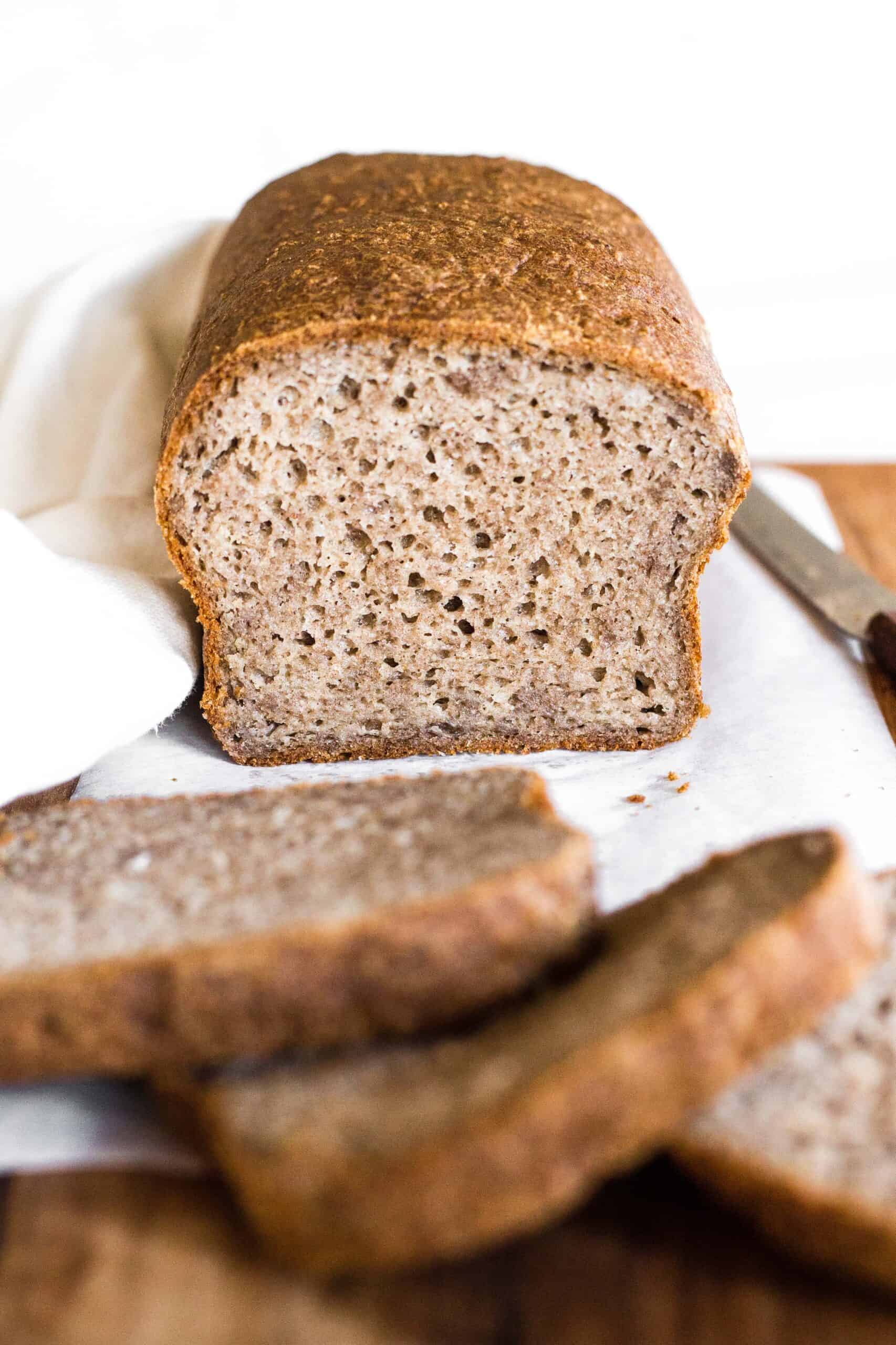
Want to save this recipe?
Enter your email & I’ll send it to your inbox. Plus, get great new recipes from me every week!
Jump to:
- My Love for Homemade Bread
- Deliciously Fluffy Teff Bread
- What is Teff?
- Health Benefits of Teff
- Is Teff Gluten-Free?
- Why This Recipe Works:
- Ingredients You’ll Need:
- Recipe Notes/Substitutions:
- How to Make Teff Bread (Step by Step)
- Dish by Dish Tips/Tricks:
- Recipe FAQs:
- Jam Recipes to Eat With Teff Bread:
- Our Favorite Yeast Breads to Enjoy:
- Other Gluten-Free Bread Recipes You’ll Love:
- Soft, Fluffy Teff Bread (Gluten-Free, Dairy-Free)
My Love for Homemade Bread
The joy of baking a loaf of homemade bread is never lost on me, and the process of bread-baking is as therapeutic as curling up with a good book and a warm cup of tea.
I love baking all kinds of bread, but yeast breads definitely have a special place in my heart.
Mixing bread dough and watching it double in size never ceases to amaze me. And pulling a freshly baked loaf from the oven, feeling the warmth rush out onto my face always makes me feel like I’m on the top of the world.
Some of my favorite yeast breads include this super popular buckwheat bread, this fluffy millet bread, our gluten-free white bread, this gorgeous no-knead artisan bread, and this rosemary focaccia.
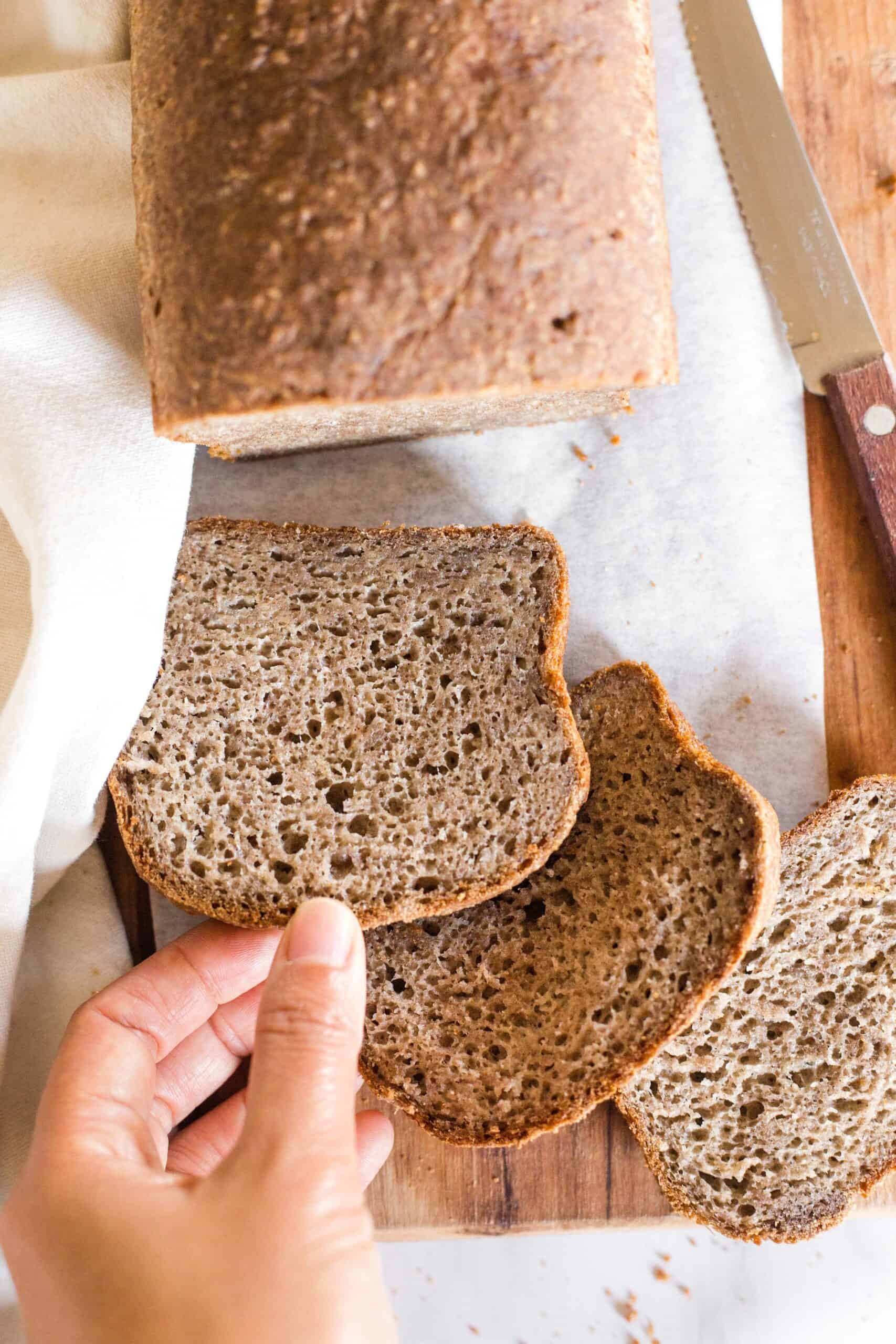
Deliciously Fluffy Teff Bread
When I found teff flour at the natural foods store the other day, I knew I simply had to develop a bread recipe with it.
I wanted to create a loaf of gluten-free bread that resembled whole wheat bread in how it looked and tasted, and this amazingly soft, tender and fluffy teff flour bread was born.
Say goodbye to hard and dry gluten-free loaves from the store! You’ll want to make this loaf over and over again!
What is Teff?
Teff is an African cereal which is almost mainly grown in Ethiopia, where it is a dietary staple. (Fun fact: A common Ethiopian food is teff injera, a traditional bread which is made from a fermented batter prepared with this whole grain flour.)
Considered an ancient grain, the teff grain was one of the earliest domesticated plants and is cultivated for its edible seeds. Teff is the world’s smallest grain, and its seeds are very small and similar in size to poppy seeds.
There are different varieties of teff seeds, from white and red to dark brown, and have a naturally nutty flavor (the lighter-colored seeds have are milder in taste, while the darker-colored seeds are earthier in taste).
Teff seeds are mostly ground into a fine flour. Depending on which teff grains you use, the color of the ground teff flour will vary.
The photo below shows darker-colored whole grain brown teff flour (naturally, white teff flour and ivory teff flour will be lighter in color).
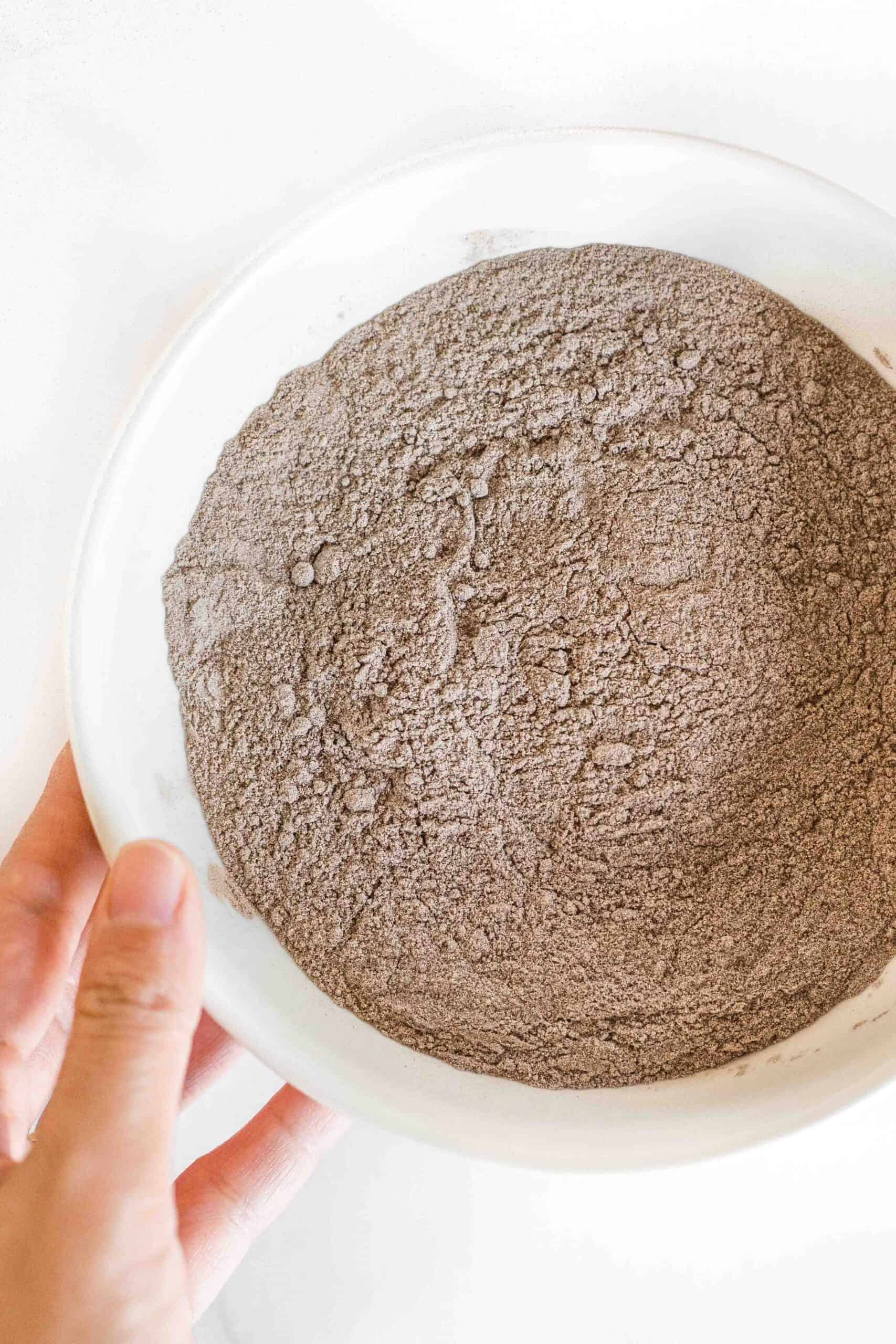
Health Benefits of Teff
In terms of its nutritional value, teff is a rich source of protein and dietary fiber.
Compared to other grains, it also has a high mineral content, and is a good source of minerals such as potassium, copper, and potassium, among others.
Is Teff Gluten-Free?
Unlike other grains such as wheat, rye, spelt, or barley, teff is a naturally gluten-free grain.
This means that those with Celiac disease or gluten-intolerance can enjoy teff flour as a replacement for regular wheat flour.
Teff can be easily found at health food stores, and it can be used in many gluten-free recipes. Today, we’re making this deliciously tender and soft gluten-free teff flour bread.
Why This Recipe Works:
- Simple Ingredients: The ingredients required to make this teff bread recipe are easily accessible at the grocery store or natural food store.
- Easy to Make: The dough comes together as easily as mixing the dry ingredients with the wet ingredients. Transfer the dough to a pan, let it double in size and then bake!
- Soft, Fluffy Texture: The texture of the bread is unbelievably soft, fluffy and tender, and is absolutely delicious! (No more hard or dry gluten-free breads!!)
- Totally Gluten-Free and Dairy-Free: The best part is that this teff bread recipe is 100% gluten-free and dairy-free, which means that even those with Celiac disease or gluten or lactose intolerances, or those simply on a gluten-free diet can have their bread and eat it too!
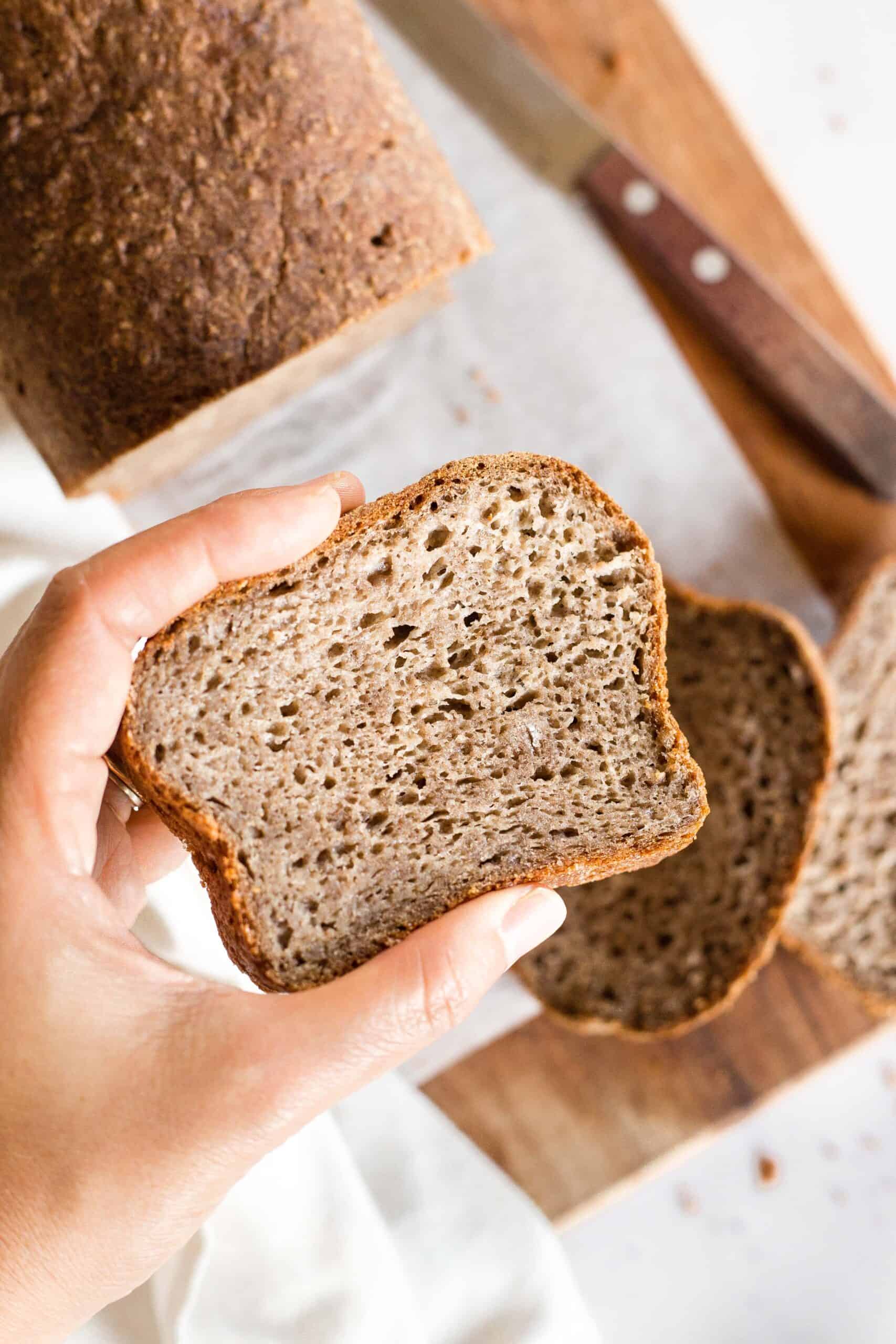
Ingredients You’ll Need:
Here’s a visual overview of the ingredients required to make this delicious teff bread recipe.
(For exact measurements and quantities, please scroll down to the recipe card at the bottom of this post.)

Recipe Notes/Substitutions:
- Gluten-Free All-Purpose Flour Blend: I recommend using a good-quality gluten free all-purpose flour blend that uses lighter flours/starches (such as rice flour, corn starch, tapioca starch or potato starch) to ensure a fluffier final texture. I do NOT recommend using a gluten-free blend with heavier flours (such as garbanzo bean flour) as that will result in a denser final texture.
- Xanthan Gum: Xanthan gum is the substitute for gluten in gluten-free flours, and helps to bind the ingredients together. If your gluten-free flour blend does not already include xanthan gum, make sure to add it in.
- Teff Flour: Since this is teff bread recipe, teff flour is essential. However, if you would to make this bread but don’t have access to teff flour, a few good substitutes would be buckwheat flour, brown rice flour, sorghum flour, millet flour or amaranth flour.
- Psyllium Husk Powder: Psyllium husk powder helps to give the ingredients extra binding power, and it makes to bread dome beautifully. Make sure you use the powder version. For best results, I do NOT recommend substituting this with anything else. (If you only have access to whole psyllium husks, you can use your high-speed blender or a coffee grinder to grind the psyllium husks into a very fine powder.)
- Baking Powder: In addition to instant yeast, baking powder will help this teff flour bread rise even more. If you have Celiac disease or are gluten-intolerant, make sure to use certified gluten-free baking powder.
- Instant Yeast: Yeast is required for the dough to rise and create beautiful pockets of air in the bread. I like using instant yeast because no prior activation time is required. However you may also use active dry yeast if you prefer (the difference is that instant yeast can be mixed directly with the dry ingredients, while active dry yeast requires rehydration for it to be activated).
- Sugar: Sugar is necessary as the food for the yeast to feed on so it can be activated and produce the gases to form air pockets and make the dough rise. The sugar will be consumed by the yeast, so the bread will not be sweet once baked.
- Sunflower Oil: I like using sunflower oil because I always have a bottle of it on hand. However, you may also use another vegetable oil such as extra virgin olive oil, melted coconut oil, or avocado oil. Alternatively, if you are not lactose-intolerant, feel free to use melted butter instead.
- Apple Cider Vinegar: Apple cider vinegar creates an acidic environment that activates the baking powder to create gases that will help the dough rise more. If you don’t have ACV, you may also use white vinegar or lemon juice in equal quantities.
- Warm Water: The water needs to be warm to activate the yeast. Make sure that the water is between 105 to 115F (if it’s too cold, the yeast will not be activated, if it’s too hot, the high temperature will kill the yeast). If you prefer, you may also use warm non-dairy milk (such as almond milk, cashew milk, rice milk, soy milk or coconut milk) instead of water. Alternatively, if you are not lactose-intolerant, feel free to use normal milk instead.
- Eggs: The eggs help to bind the ingredients as well as gives the bread more lift. If you are allergic to eggs, or prefer to make this recipe completely vegan, you may use aquafaba or an egg-replacer.

How to Make Teff Bread (Step by Step)
1. Grease and Preheat
Preheat the oven to 350F and arrange the oven rack to the middle third position. Grease an 8″ x 4″ nonstick metal loaf pan with oil.
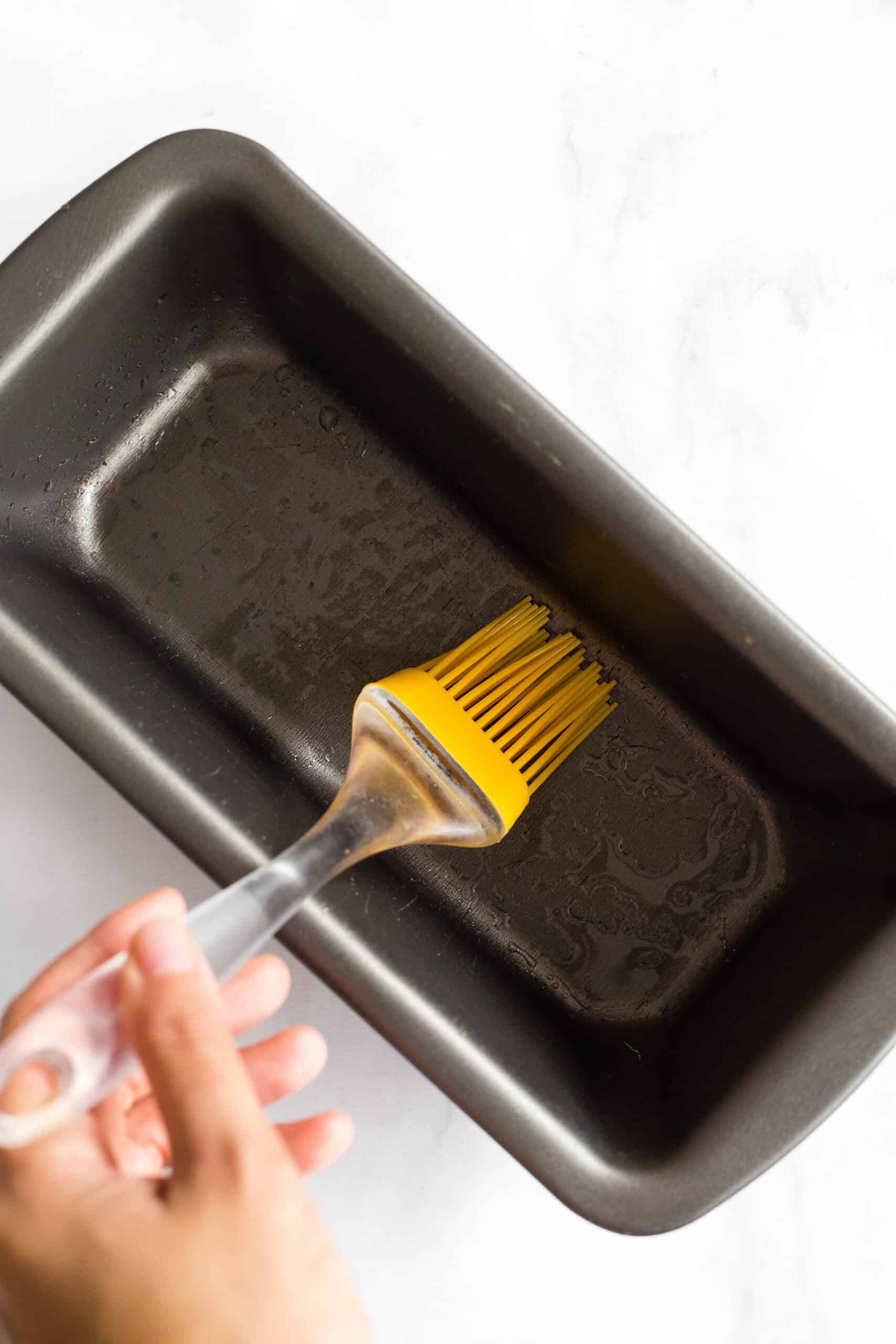
2. Combine Dry Ingredients
In a large mixing bowl, whisk the gluten-free all-purpose flour, xanthan gum (if using), teff flour, psyllium husk powder, baking powder, salt, instant yeast, and sugar together.

3. Add Wet Ingredients
Add the vegetable oil, apple cider vinegar, and warm water to the large bowl with the dry ingredients, and mix well until combined. Add the beaten eggs and mix for another minute until you get a dough that looks like thick cake batter (the dough will be sticky and wet, but that’s exactly the texture you want).

4. Transfer Dough to Pan
Transfer the teff bread dough to the prepared loaf pan and smooth out the top with a wet spatula.
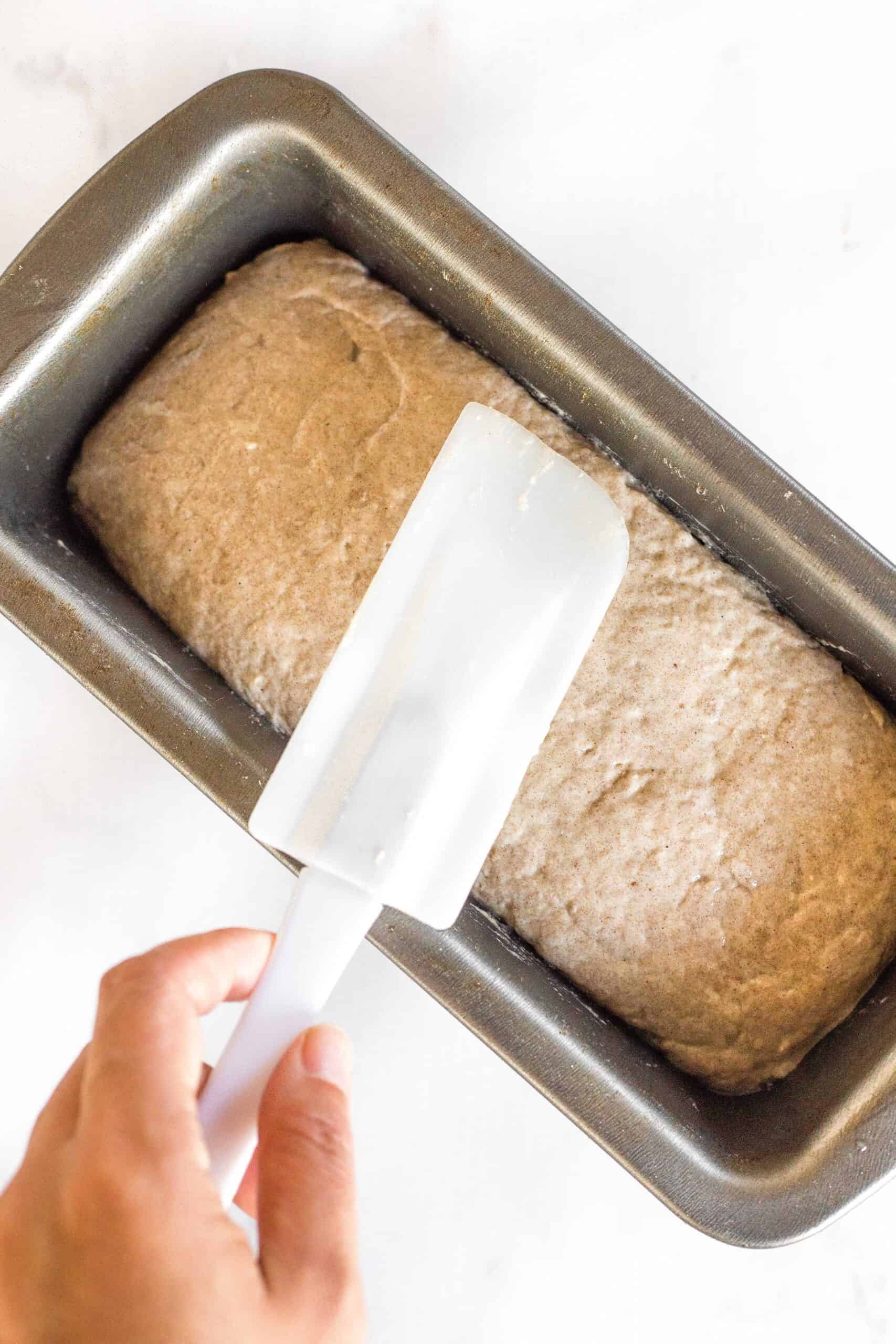
5. Let Dough Rise
Cover the pan with kitchen towel and let the dough rise for approximately 30 to 40 minutes in a warm, draft-free place, until it has roughly doubled in size and almost reaches the top of the pan.
(Tip: I like to place the pan in the microwave with the microwave switched OFF while the dough rises.)
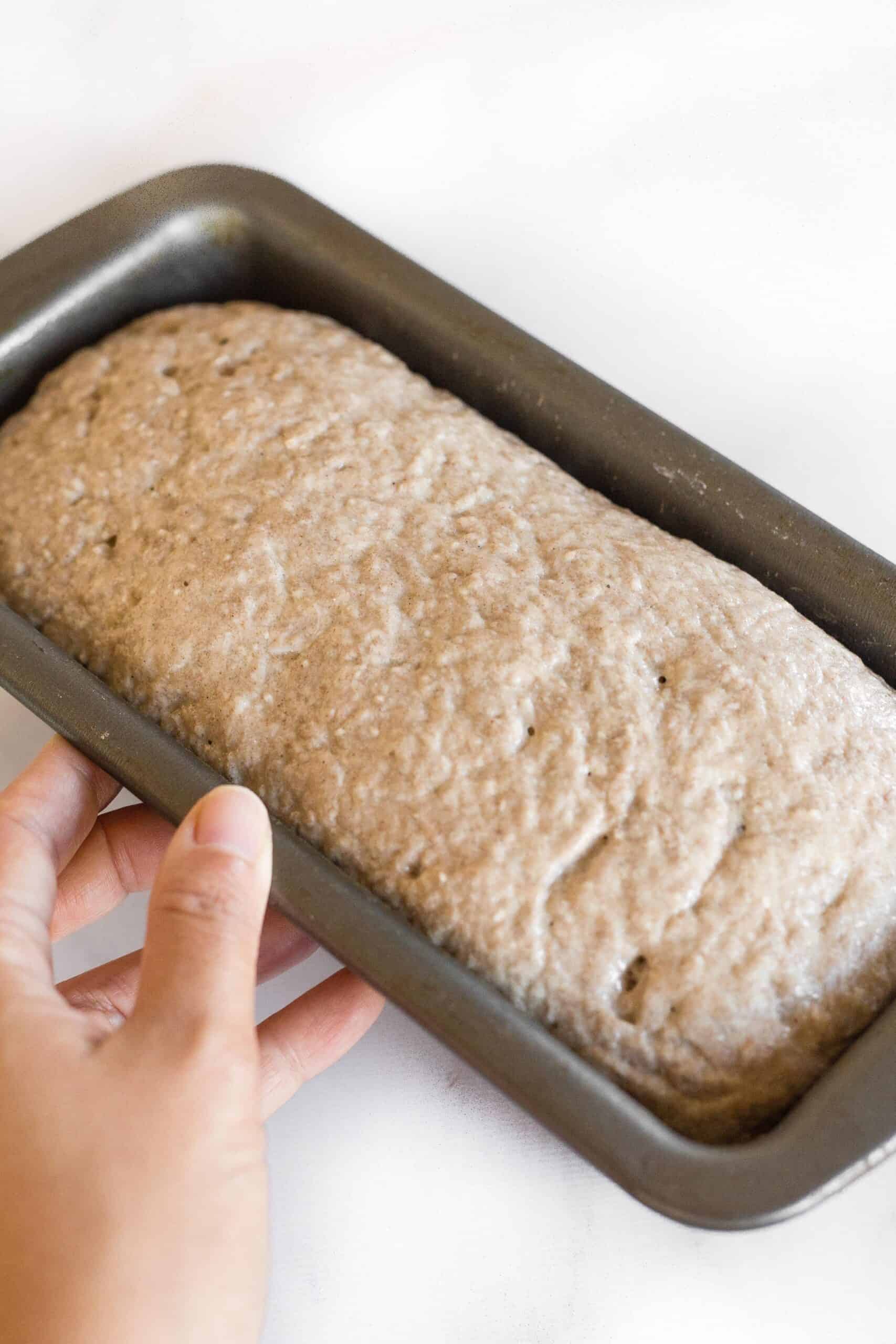
6. Bake Until Ready
Bake for 50 to 60 minutes until the teff bread is dark brown on top and sounds hollow when tapped.
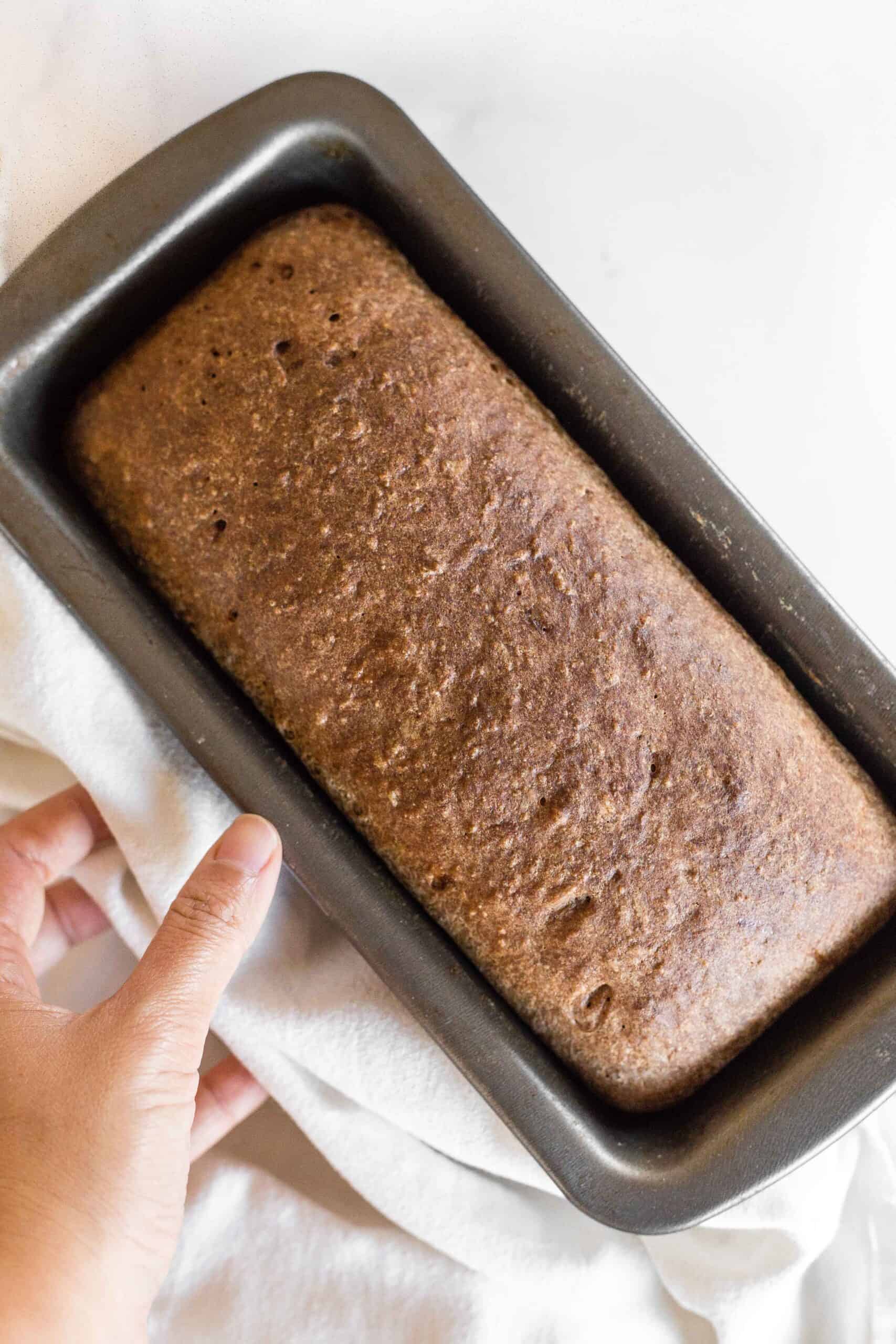
7. Cool Completely Before Slicing
Let the freshly baked teff bread cool for at least 10 minutes in the loaf pan, before removing it and letting it cool fully at room temperature on a wire rack (the bread will continue cooking on the inside from the residual heat).
Only slice into the loaf with a serrated knife once it’s fully cooled.

Dish by Dish Tips/Tricks:
- Use a Metal Loaf Pan: I recommend using a metal loaf pan because metals conducts heat more evenly and ensures that the bread is evenly cooked and golden brown on the sides and the bottom. I find that glass pans or ceramic pans may result in the bottom being a little less cooked.
- Pan Size Determines Loaf Height: I use an 8″ x 4″ loaf pan for this teff bread recipe and the bread comes out in the perfect height. If you use a larger pan (such as a 9″ x 5″ pan), the loaf will naturally be wider and flatter.
- Use a Serrated Knife to Slice: To slice, make sure you use a serrated bread knife (a knife with ridged edges) instead of a smooth-edged knife so as not to flatten the bread.
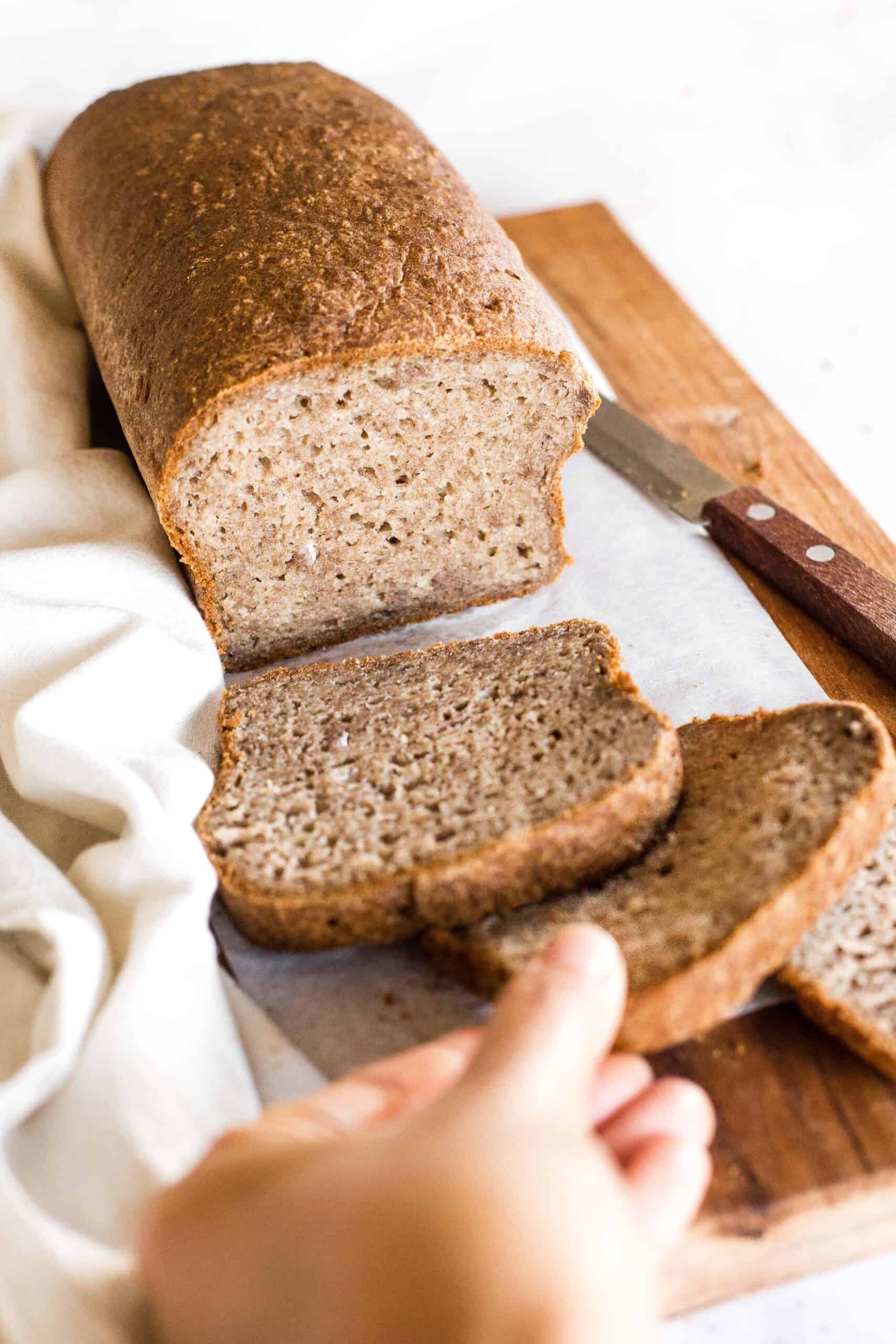
Recipe FAQs:
To store, place the cooled teff flour bread in an airtight container and store in the refrigerator for up to 5 days.
To freeze, wrap the cooled teff flour bread in various layers of plastic wrap and freeze for up to 2 months. Let frozen loaf thaw overnight in the refrigerator before slicing.
Yes, teff is a naturally gluten-free grain (unlike other grains such as wheat, rye, spelt or barley). This means that those with Celiac disease or gluten-intolerances can enjoy teff flour as a replacement for regular wheat flour.
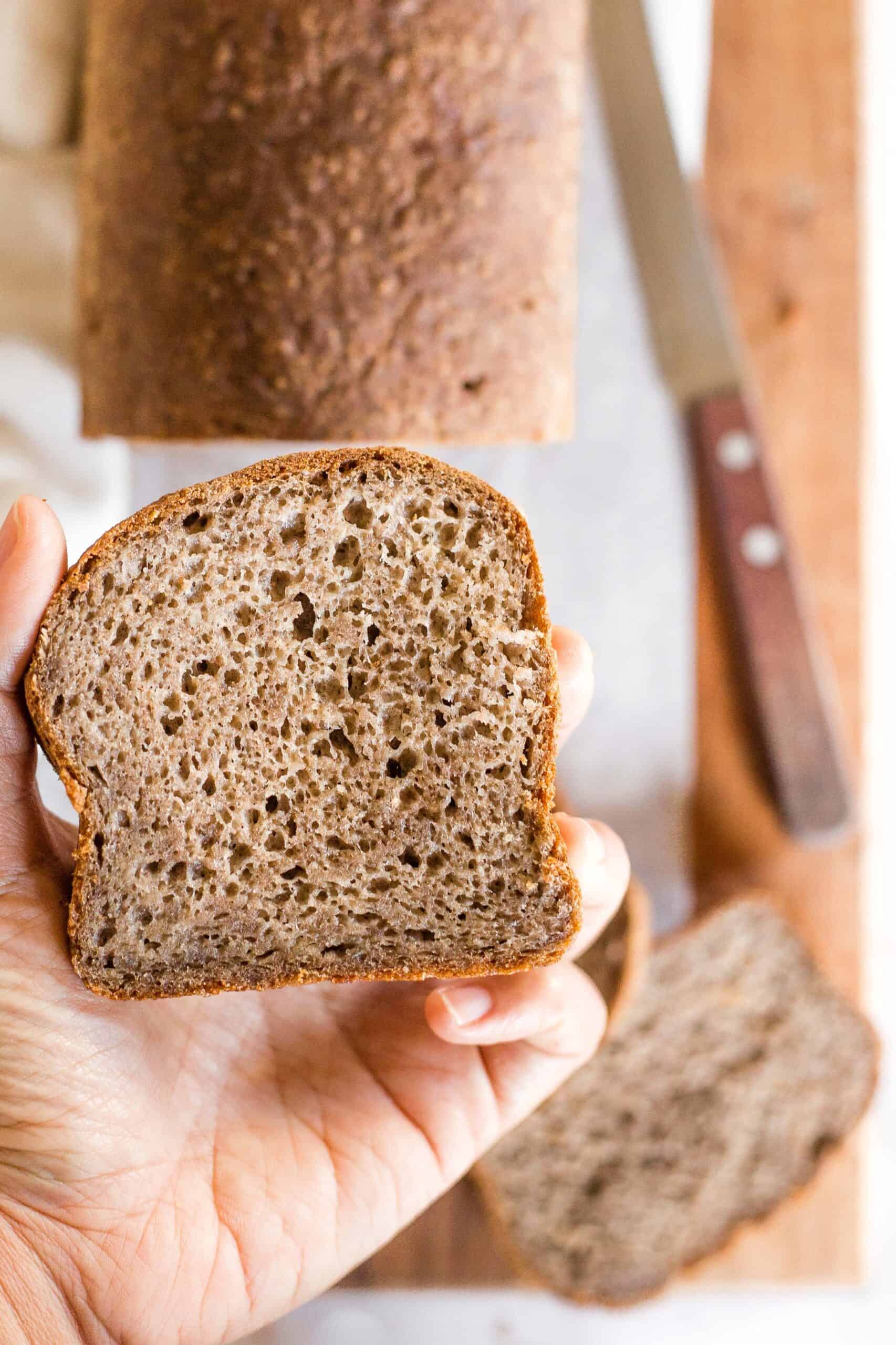
Jam Recipes to Eat With Teff Bread:
- Apricot Jam (Gluten-Free, Vegan)
- Plum Jam (Gluten-Free, Vegan)
- Mixed Berry Chia Seed Jam (Gluten-Free, Vegan)
- Fig Jam (Gluten-Free, Vegan)
Our Favorite Yeast Breads to Enjoy:
- Gluten-Free White Bread (Dairy-Free)
- Buckwheat Bread (Gluten-Free, Dairy-Free)
- Brown Rice Bread (Gluten-Free, Dairy-Free)
- Sorghum Bread (Gluten-Free, Dairy-Free)
- Millet Bread (Gluten-Free, Dairy-Free)
- Quinoa Bread (Gluten-Free, Dairy-Free)
- Potato Bread (Gluten-Free, Dairy-Free)
- Artisan Bread (Gluten-Free, Dairy-Free)
Other Gluten-Free Bread Recipes You’ll Love:
P.S. If you try this recipe, I’d love for you to leave a star rating below, and/or a review in the comment section further down the page. I always appreciate your feedback. Be sure to check out my entire Recipe Index for all the recipes on the blog. You can also follow me on Pinterest, Facebook or Instagram! Sign up for my Email List to get fresh recipes in your inbox each week!
Print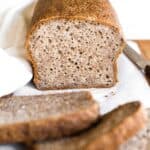
Soft, Fluffy Teff Bread (Gluten-Free, Dairy-Free)
- Total Time: 1 hour 30 minutes
- Yield: 12 servings 1x
- Diet: Gluten Free
Description
This incredibly soft and fluffy teff bread has a deliciously nutty and earthy flavor, and comes together very easily. It tastes delicious and looks uncannily similar to whole wheat bread. This teff flour bread is perfect for making sandwiches, avocado toast, or simply toasted and spread with jam. Totally gluten-free and dairy-free too, but no one would care!
Ingredients
- 1 3/4 cup gluten-free all-purpose flour
- 1 teaspoon xanthan gum (leave out if your flour blend already includes it)
- 1/2 cup teff flour
- 2 tablespoons psyllium husk powder
- 1 teaspoon baking powder
- 2 1/4 teaspoons instant yeast
- 2 tablespoons sugar
- 1 teaspoon salt
- 1/3 cup sunflower oil
- 1 teaspoon apple cider vinegar
- 1 1/2 cups warm water (approx. 105 to 115F)
- 2 large eggs, beaten (room temperature)
Instructions
- Grease and Preheat: Preheat the oven to 350F and arrange the oven rack to the middle third position. Grease an 8″ x 4″ nonstick metal loaf pan with oil.
- Combine Dry Ingredients: In a large mixing bowl, whisk the gluten-free all-purpose flour, xanthan gum (if using), teff flour, psyllium husk powder, baking powder, salt, instant yeast, and sugar together.
- Add Wet Ingredients: Add the vegetable oil, apple cider vinegar, and warm water, and mix well until combined. Add the beaten eggs and mix for another minute until you get a dough that looks like thick cake batter (the dough will be sticky and wet, but that’s exactly the texture you want).
- Transfer Dough to Pan: Transfer the teff bread dough to the prepared loaf pan and smooth out the top with a wet spatula.
- Let Dough Rise: Cover the pan with kitchen towel and let the dough rise for approximately 30 to 40 minutes in a warm, draft-free place, until it has roughly doubled in size. (Tip: I like to place the pan in the microwave with the microwave switched OFF while the dough rises.)
- Bake Until Ready: Bake for 50 to 60 minutes until the teff bread is dark brown on top and sounds hollow when tapped.
- Cool Completely: Let the freshly baked loaf cool for at least 10 minutes in the loaf pan, before removing it and letting it cool fully on a wire rack.
Notes
Gluten-Free All-Purpose Flour Blend: I recommend using a good-quality gluten free all-purpose flour blend that uses lighter flours/starches (such as rice flour, corn starch, tapioca starch or potato starch) to ensure a fluffier final texture. I do NOT recommend using a gluten-free blend with heavier flours (such as garbanzo bean flour) as that will result in a denser final texture.
Xanthan Gum: Xanthan gum is the substitute for gluten in gluten-free flours, and helps to bind the ingredients together. If your gluten-free flour blend does not already include xanthan gum, make sure to add it in.
Teff Flour: Since this is teff bread recipe, teff flour is essential. However, if you would to make this bread but don’t have access to teff flour, a few good alternatives would be buckwheat flour, brown rice flour, millet flour, sorghum flour or amaranth flour.
Psyllium Husk Powder: Psyllium husk powder helps to give the ingredients extra binding power, and it makes to bread dome beautifully. Make sure you use the powder version. For best results, I do NOT recommend substituting this with anything else. (If you only have access to whole psyllium husks, you can use your high-speed blender or a coffee grinder to grind the psyllium husks into a very fine powder.)
Baking Powder: In addition to instant yeast, baking powder will help this teff flour bread rise even more. If you have Celiac disease or are gluten-intolerant, make sure to use certified gluten-free baking powder.
Instant Yeast: Yeast is required for the dough to rise and create beautiful pockets of air in the bread. I like using instant yeast because no prior activation time is required. However you may also use active dry yeast if you prefer (the difference is that instant yeast can be mixed directly with the dry ingredients, while active dry yeast requires rehydration for it to be activated).
Sugar: Sugar is necessary as the food for the yeast to feed on so it can be activated and produce the gases to form air pockets and make the dough rise. The sugar will be consumed by the yeast, so the bread will not be sweet once baked.
Sunflower Oil: I like using sunflower oil because I always have a bottle of it on hand. However, you may also use another vegetable oil such as extra virgin olive oil, melted coconut oil, or avocado oil. Alternatively, if you are not lactose-intolerant, feel free to use melted butter instead.
Apple Cider Vinegar: Apple cider vinegar creates an acidic environment that activates the baking powder to create gases that will help the dough rise more. If you don’t have ACV, you may also use white vinegar or lemon juice in equal quantities.
Warm Water: The water needs to be warm to activate the yeast. Make sure that the water is between 105 to 115F (if it’s too cold, the yeast will not be activated, if it’s too hot, the high temperature will kill the yeast). If you prefer, you may also use warm non-dairy milk (such as almond milk, cashew milk, rice milk, soy milk or coconut milk) instead of water. Alternatively, if you are not lactose-intolerant, feel free to use normal milk instead.
Eggs: The eggs help to bind the ingredients as well as gives the bread more lift. If you are allergic to eggs, or prefer to make this recipe completely vegan, you may use aquafaba or an egg-replacer.
Storing/Freezing: To store, place the cooled teff bread in an airtight container and store in the refrigerator for up to 5 days. To freeze, wrap the cooled loaf in various layers of plastic wrap and freeze for up to 2 months. Let frozen loaf thaw overnight in the refrigerator before slicing.
- Prep Time: 5 mins
- Rising Time: 30 mins
- Cook Time: 55 mins
- Category: Bread
- Method: Baking
- Cuisine: American

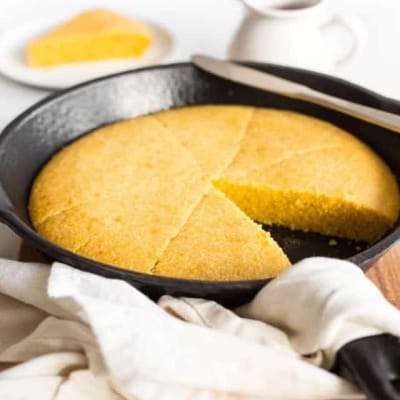
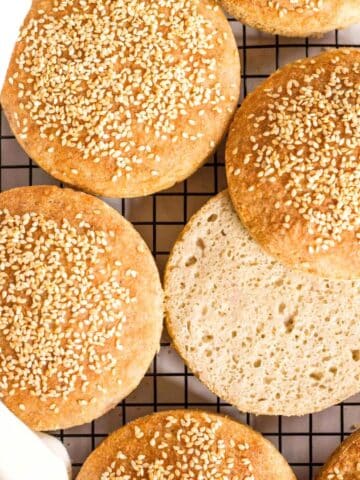
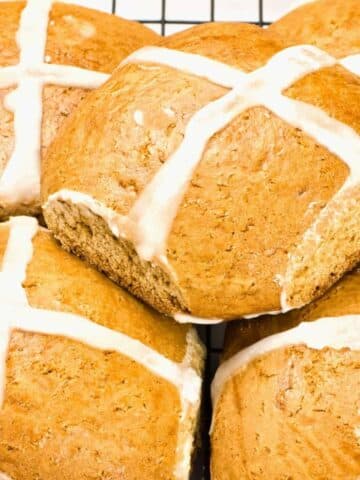
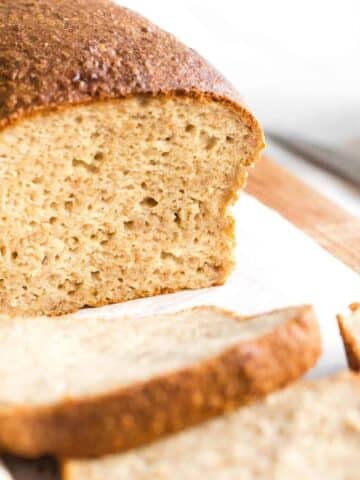
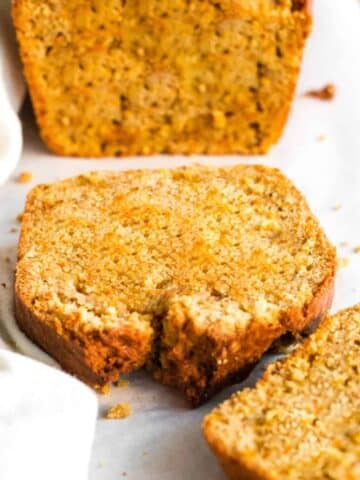


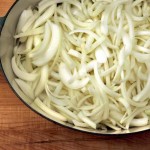
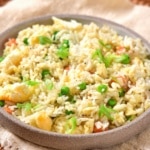

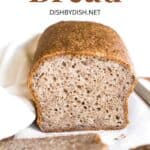
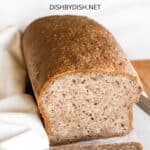
I have made this recipe twice, once using chickpea flour in place of teff (I thought I had some, but didn’t), and once following the recipe exactly as written. Both times I used a 9 x 5 pan. In each case, the loaf was concave on top. The flavour is excellent, but I was wondering whether the larger size of the pan made a difference ? Did I let it rise too long? I notice in one comment above you suggested reducing the amount of water. Help! I really want this to work for a friend who is celiac.
Hi Cathy! So happy to hear you enjoy the flavor of this bread. Let’s troubleshoot regarding the top of the loaf sinking in – this is probably due to your dough being too wet (this will depend on the gluten free flour blend used as well as the humidity and season where you live), so yes I would suggest reducing the amount of water by 1/4 cup. A less wet dough will rise slower, but this will aslo help it hold its shape after baking! 🙂 Hope this helps!
Finally a bread that makes good sandwiches to take on my hiking adventures! Once cooled, I cut the loaf into slices and freeze the slices in pairs so all I have to do is grab a little pack for the day’s lunch. Thank you
Hi Jill! Makes me so happy to hear how much you enjoy this teff bread! And such a great idea about freezing the slices in pairs so you just grab a packet each time you go hiking! Thanks for sharing how it went, and hope to see you around the blog again sometime soon!
xx,
Felicia
Made this today. Unfortunately I didn’t have any teff flour. I thought I did, but I substituted it with sprouted buckwheat flour and it is delicious! I will be getting some teff flour to try it again. A friend once commented that gluten-free bread is always so dry, but she won’t be able to say that about this bread when I give her a sample. Thank you so much for sharing your recipe. I think this will be used over and over. It’s so simple and quick and easy to make.
YAY! So happy to hear that you loved this recipe Diane! Thanks for sharing how it went with the substitutions 🙂
Obsessed with your recipe – thank you!! An absolutely perfect loaf. PS for anyone considering the same, I did substitute EVOO for the safflower and had great luck.
Hi Paula! So happy to hear that you’re enjoying this teff bread! Thanks for the feedback about substituting sunflower oil with extra virgin olive oil 🙂 Hope to see you around the blog again sometime soon!
xx,
Felicia
This is the second time I make this Bred, but this time I decide make it on the Bread Machine and I would like you to know that it came out PERFECT AND DELICIOUS, so happy how I did it, much easy and great results. Just love it. Thank you so much.
Hi Beatriz! So happy to hear that it worked in the bread machine too 🙂 Thanks for sharing how it went, and I hope to see you around the blog again sometime soon!
xx,
Felicia
Excellent flavor and texture. Thank you for this.
So happy to hear that dear! Thank you!! Hope to see you on the blog again sometime soon!
Thank you for this recipe. This is my go-to recipe for making bread. It’s delicious, has a nice texture, and even allows me to spread with soft butter or peanut butter and jelly.
Hi Davida, I’m so glad you enjoy this teff bread 🙂 Makes me so happy to know that! Have a great day, and I hope to see you around the blog again sometime soon!
Hello!
I just made this bread, I love the ingredients. I substituted the oil for olive oil. I baked for 65 minutes, the top seemed to fall, I am still waiting for it to cool completely but it seems under baked somehow?? I feel like I do not have the knack for making bread 🙁
Hi Christy, let’s troubleshoot. It seems that your bread dough might be too wet (this will vary depending on humidity where you live/are baking at, the type of GF flour blend you use, etc), I think that you can try to reduce the amount of liquids (water) by 1/4 cup, and this will result in a drier dough that will take a longer time to rise, but will have a better structure that can hold the shape after baking instead of falling in the middle.
Hope this helps, and don’t feel bad about baking GF bread – GF bread baking is a journey with a steep learning curve at the start (trust me, when I first started baking GF I had to throw away quite a few loaves), but once your get the hang of it things will get easier!!
Hope too see you around the blog again sometime soon!
xx,
Felicia
HAVING SO MANY FOOD ALLERGIES IT IS HARD TO FIND FOODS THAT I CAN EAT AND THAT ALSO TASTE GOOD. MY HUSBAND AND I RECENTLY DISCOVERED TEFF FLOUR, AND IN MY SEARCH FOR BREAD I FOUND YOUR RECIPE. I DID HAVE TO EXCHANGE THE GLUTEN FREE FLOUR FOR ALMOND FLOUR (WHICH I HAVE AN ALMOND FLOUR PLUS THAT HAS XANTHAM GUM IN IT). THIS BREAD HAS SO MUCH FLAVOR AND GREAT TEXTURE! I WAS WANTING TO KNOW THOUGH, CAN IT BE MADE IN A BREAD MACHINE? IF SO, IS THERE ANY SPECIAL ORDER IN WHICH TO ADD THE INGREDIENTS? BECAUSE OF MY CRAZY SCHEDULE THE BREAD MACHINE IS MY GO TO! THANK YOU!
Hi Marci!! So happy to hear that you and your husband loved this bread (and that it works with the almond flour substitute)! I personally don’t have a bread machine, but I believe it should work on the gluten-free setting. If you use instant yeast, I believe you can add all the ingredients at once. Or, if you want to be sure, follow the recipe up to the point where you get a dough, and then transfer the dough to the bread machine, and then bake at the GLUTEN-FREE setting. Hope this helps!
xx,
felicia
Oh my goodness – what a wonderful find! I have been looking for a good sandwich bread for my hiking lunches and here it is! I made a loaf yesterday and am looking forward to a real sandwich when I go hiking next week. I also made your potato bread which is just as wonderful. I used GFOAS Mock cup4cup flour blend. Thank you thank you thank you!
So happy to hear that you enjoyed this teff bread Jill! Thank you for letting me know how it went!
Great recipe! Thank you for sharing it. This is the best gf bread recipe I have found. It’s super easy to make , not too many ingredients, the ingredients are easy to find, it’s delicious, slices exceptionally well, and keeps well over several days. The first time I made it it wasn’t quite cooked through but now I bake it for a full hour and have no problem.
I am going to try the pumpernickel bread next.
Hi Helen, thank you so much for your sweet note, and glad to have you here! I’m so happy you enjoy this teff bread as much as we do, and I hope you enjoy the pumpernickel bread too 🙂
Felicia,
This bread is phenomenal! So easy and fast to make. In 20 years of GF baking I’ve never used teff flour; I like the whole grain nutty flavor. I did substitute extra virgin olive oil for the sunflower oil, it’s what I always have on hand. My bread stuck to the pan, so I will use parchment paper next time. This might replace my millet bread.
Thank you for such a wonderful new recipe. Delicious!
Hi Susan!
Thank you so much for your lovely comment! So happy to hear that you loved this teff bread, thanks for sharing how it went. Hope to see you around the blog again sometime soon! Happy weekend to you!
xx,
Felicia
This is a great recipe! My first loaf (there will be more) came out really fluffy, kind of chewy, soft and with a ton of flavor. I really love how you combined the teff with a 1:1 flour because it makes the recipe so convenient. I used Thomas Keller’s Cup4Cup and was happy with the results, but I will also try with the KA 1:1 when I get around to buying some. I used an 8×4 in pan and it rose up and over the top, but still had a nice shape. I may make the next one in a 9×4 inch Pullman just to see how the dough works with the high straight sides. Thanks for sharing the recipe. Minor changes: I used 2 1/2 tablespoons of butter rather than the full 1/3 cup of oil and only needed about 1 1/4 cups of water, which may have had to do with the fact I used a different 1:1 blend. One thing I’ve learned with gluten-free bread baking is to add the water gradually since all of these blends soak up diffferent amounts.
Hi Anna! So happy to hear that you loved this teff bread. Indeed, combining teff flour with GF all purpose flour makes the texture lighter and fluffier (using 100% teff flour will make the bread denser and drier). Thanks for sharing your substitutions and tips! 🙂 Hope to see you around the blog again sometime soon!
Hi Felicia,
I’m going to give this a try. I noticed that the link in the recipe for the gluten-free flour goes to King Arthur’s gluten-free baking mix. I recently bought the KA gluten-free baking mix by accident because the box looks almost the same as the King Arthur gluten-free flour. I think the two products are different and the baking mix is mainly for scones, muffins, pancakes and such, so I’m not sure it would work in this recipe and am thinking maybe you made the same mistake I did and linked to the baking mix rather than the gluten-free all purpose flour. But I could be wrong and maybe the baking mix is the correct product? Please let me know which one to use. Thanks!
Hi Anna! Sorry for the delayed reply! You’re right, you should use the King Arthur Flour gluten-free all purpose flour instead of the baking mix. Thanks for catching it. Will fix the link once I’m able to (currently about to move to Rome)! 🙂
Hi Felicia,
I am truly intrigue in knowing this teff flour bread is so soft and fluffy.
I have never known of this type of flour before and yes, many thanks for introducing this to us.
Love you lots!
Mum
Hi mummy if you find teff flour in Singapore you can try making a loaf of this teff bread! Adds a little bit more fiber and feels more like whole grain bread.